Calculating gluten-free conversions
How to covert (almost) any recipe to be gluten-free.
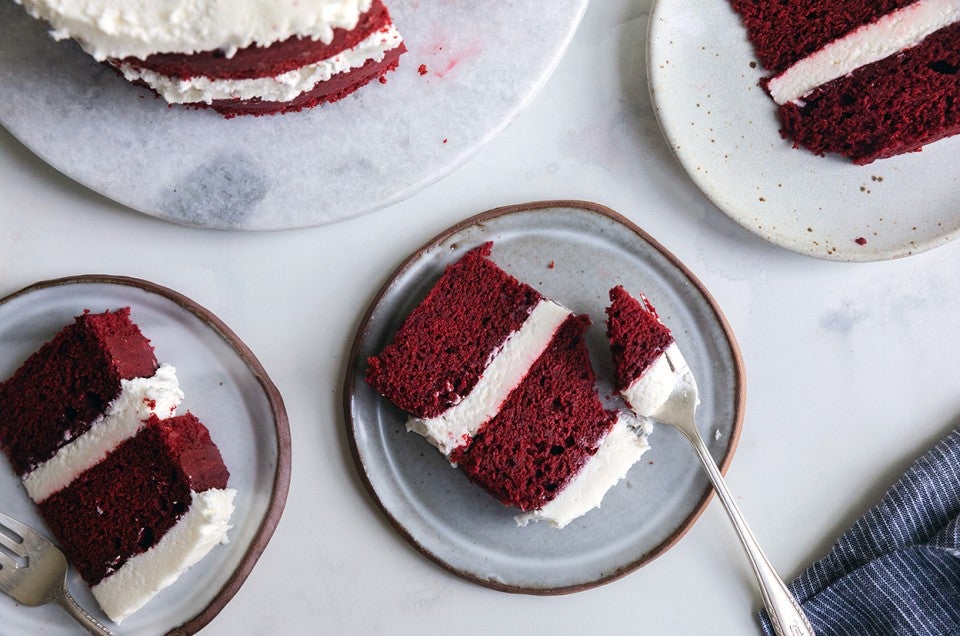

Editor's note: This post was updated in May 2024 to more accurately reflect our gluten-free conversion guidelines and product offerings.
When it comes to converting baking recipes to be gluten-free, things can quickly get complicated.
You might be wondering: Can't I just make my favorite recipes with gluten-free flour and cross my fingers for the best?
Well, you could, but it's not always so easy. Some conversions will work, but others will not, and while it’s not an exact science, understanding some basic tips can increase your chances of success. That’s what we’re here for.
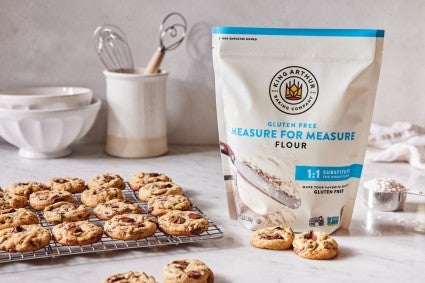
It's easy to make traditional recipes gluten-free with King Arthur Gluten-Free Measure for Measure Flour. It's a simple 1:1 substitute for all-purpose or whole grain flour that's designed to be easily swapped into most of your favorite non-yeasted recipes. It's ideal for almost all classic baking recipes — brownies, cookies, cake, biscuits, pancakes, muffins, etc. — and doesn't require any additional changes to the recipe.
Which means that with a bag of Measure for Measure Flour, you can make basically any non-yeasted recipe gluten-free. That’s it!
If, instead of simply swapping in Measure for Measure Flour, you're baking with gluten-free all-purpose flour — either our King Arthur Gluten-Free All-Purpose Flour or another type — you can still make a gluten-free version of a traditional recipe. It just takes a little extra adjustment. Here’s what to do.
Baker’s tip: For making cakes, muffins, cookies, and yeast doughs, a stand mixer is your new baking best friend. The power of the machine will stir your blends, aerate your batters, agitate your doughs, and hydrate your gums better than mere muscle alone. If you don't have one already, it's the best investment you'll make.
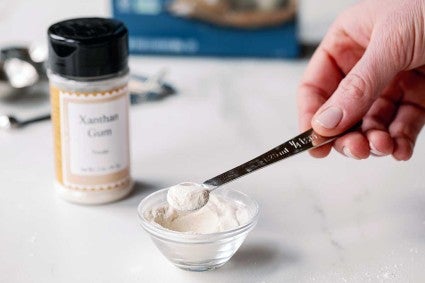
One important note: Xanthan gum is an important addition to gluten-free recipes, as it helps bind batters, lock in moisture, enhance texture, and control spread. Since Gluten-Free All-Purpose Flour doesn’t contain xanthan gum (like Measure for Measure does), you will have to add xanthan gum to your recipe when converting to be gluten-free. While there's no specific formula, we start with 1/4 teaspoon of xanthan gum for every 1 cup of flour in a recipe. Scale up for something that needs more elasticity (like Gluten-Free Cinnamon Rolls), or scale down for something that doesn’t need as much structure (like Gluten-Free Shortbread Cookies). This may take some experimenting.
Learn more about xanthan gum, as well as the difference between gluten-free flours.
Baker's tip: Have you ever spilled xanthan gum on your counter and tried to clean it up with a wet sponge? Unless you want a counter-top slip-and-slide (not to mention a few bucks down the drain), it's best to use a bench knife for cleanup, so you can maneuver the gum back into its container.
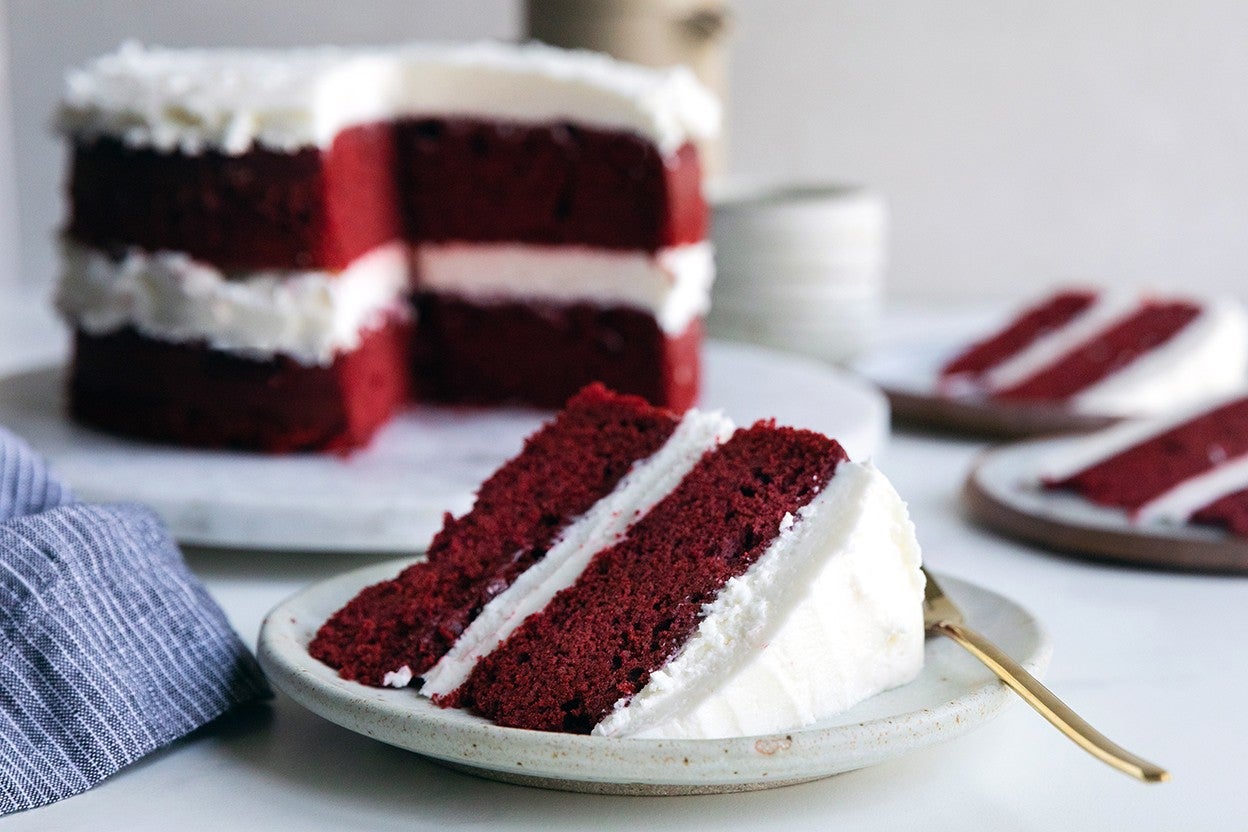
Cakes, quick breads, and muffins are some of the easiest, more straightforward recipes to recreate without gluten.
If baking with Gluten-Free All-Purpose Flour, these recipes need added xanthan gum (1/4 teaspoon per cup of flour is sufficient) and additional liquids. We usually suggest adding an extra egg to efficiently provide leavening, structure, and liquid.
Though it's important to aerate a cake batter, take care not to over-beat your gluten-free cake batter, as it can cause deflation in the oven. Baking cake to an internal temperature of 210°F ensures minimal sinking as the cake cools.
Giving cake and quick-bread batters a 10- to 15-minute rest before baking will allow the starches and xanthan gum to fully hydrate. Also, if you're adding fruit, chocolate chips, or nuts to your batters, complete this rest before stirring them in, to prevent them from sinking to the bottom during the bake. When the flour and xanthan gum are hydrated after resting, the batter will thicken and be able to suspend any added elements successfully.
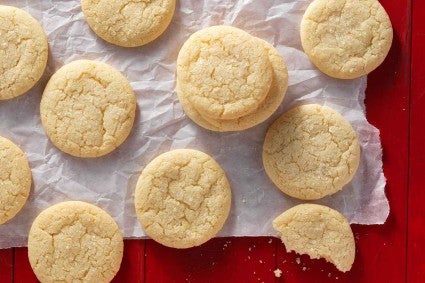
Because they lack the elastic strengthening network of gluten, cookies that are gluten-free are more prone to baking up crumbly, dry, and gritty without the proper recipe adjustments.
In the absence of gluten, and with a low hydration rate, gluten-free cookies rely on fat as a key ingredient to help create great texture. Fat can help smooth out the mouthfeel by reducing the perception of un-hydrated starch (what can cause that sandy feeling in your mouth). For the best gluten-free cookie texture when converting a recipe with Gluten-Free All-Purpose Flour, increase butter and/or shortening by up to 2 tablespoons. You can also replace a portion of the flour in the recipe with high-fat, naturally gluten-free nut flours such as almond or hazelnut.
Resting the dough for at least an hour (overnight is best) before baking is the best way to ensure that the gums and starches are hydrated to their full potential. Because of the lower level of liquid in cookie dough, the hydration rate is slower; thus a longer rest is necessary.
Adding liquids (egg, water, milk) will increase hydration and develop structure, but keep in mind that they may also promote a cake-like texture.
And don’t forget the xanthan gum! As noted above, start with 1/4 teaspoon of xanthan gum for every 1 cup of flour and adjust from there. Adding more xanthan gum will increase structure; adding less will reduce structure.
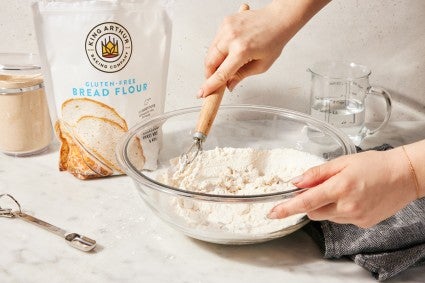
Typically, gluten-free yeast doughs are not easily convertible due to the many alterations needed for leavening and structure. Eggs, air, yeast, xanthan gum, and sometimes even chemical leavening agents are necessary to produce an ideal result along with sufficient hydration.
But with our latest gluten-free flour, that has all changed. Gluten-Free Bread Flour can be swapped 1:1 by weight or volume for the bread flour or all-purpose flour in your recipe. You’ll just need to make a few tweaks to the recipe, such as adding a few tablespoons extra liquid, letting the dough rest 20 minutes before kneading, and being prepared for faster proofing times. See full details in our blog post: How to substitute Gluten-Free Bread Flour for regular flour.
Want to learn more? Read through our Gluten-Free Baking Guide, and leave any questions in the comments, below! And remember, the easiest way to make traditional recipes gluten-free is with King Arthur Gluten-Free Measure for Measure Flour, a simple 1:1 substitute for all-purpose or whole-grain flour in non-yeasted recipes.


December 26, 2023 at 9:45am
hi! i love this one to one flour substitute but when i use it in a particular cookie recipe (my mom’s m&m cookies. my absolute FAVORITE that i make only at the holidays), they are dry (with regular flour they are not, they are very soft). any ideas? extra egg? i’ve tried less flour, but they went flat. 😂 thank you!
December 31, 2023 at 11:37am
In reply to hi! i love this one to one… by meghan (not verified)
Thanks for reaching out Meghan! Yes, we would start by adding an extra egg and see how you like the texture (it might be a bit different as you tweak the ingredient list). You could even start with an extra egg yolk if you want to try an intermediate step with minimal change.
November 7, 2022 at 8:56pm
I am using the cup for cup GF flour blend, which I see already has xantham gum added to it. I’m following a recipe out of a GF cookbook for bread, that calls for 1 and 1/4 tsp of xantham gum. Do I need to add more to my blend? How many tsp of xantham gum are in a cup of the GF flour blend?
Thanks!
November 12, 2022 at 11:36am
In reply to I am using the cup for cup… by Keeley (not verified)
Hi Keeley, we don't recommend substituting our Gluten-Free Measure for Measure flour for other kinds of gluten-free flour in gluten-free recipes. This is because different types of gluten-free flour are formulated differently, even beyond the xanthan gum content. For example, the Measure for Measure flour has a higher whole grain content than our other gluten-free flours and will absorb liquid differently. This flour is best used in regular cake, cookie, muffin and other non-yeasted recipes as a one to one substitute for either all-purpose flour or whole wheat flour. As you have no doubt discovered, gluten-free breads can be a little tricky because substitution flours like our Measure for Measure don't work well in regular bread recipes. For the best results, we recommend beginning with a gluten-free bread recipe and using the type of gluten-free flour recommended in the recipe. While I can't tell you how much xanthan gum you would need to adjust for the flour called for in your recipe, we do have several gluten-free bread recipes on our website that call for the Measure for Measure flour.
January 22, 2022 at 7:48pm
Hello Amy,
To start with, Thank you for this post. Now I have a different question about xantham gum. I want to use it in FLOUR recipes. I normally make my own baked goods but a recipe I found for hand pies wanted me to use grands biscuits and the store only had crescent rolls so I used that. LOVED IT!! Now I want to duplicate the dough with out all the junk needed to preserve the dough. The pkg ingredients listed basically biscuits with xantham gum. Soooo, would I still use 1/4 tsp per cup of flour to get the elasticity like the crescent rolls?
Thank you,
Cindy
January 23, 2022 at 10:29am
In reply to Hello Amy, To start with,… by Cindy Grice (not verified)
Hi Cindy! While it will be a bit of an experiment, as gluten free yeast baking can be quite tricky without a specific gluten free recipe, the recommendation of 1/4 teaspoon of xanthan gum per cup of flour called for would be a good place to start. Happy baking!
November 17, 2021 at 6:27pm
I am wanting to bake gluten free fruit cakes this year and I'm hoping they turn out ok . Grandkids can't have gluten so I am using gluten free flour . I'm just wanting to know how much Xanthan gum to use and Will it change the consistancy of my cakes . Thanks
November 19, 2021 at 2:51pm
In reply to I am wanting to bake gluten… by Mary (not verified)
Hi Mary,
For cakes, use about 1/2 teaspoon of xanthan gum per cup of flour in the recipe. The texture will be somewhat different, a touch more tender and a very slight sandiness on the finish. Enjoy the holidays with your family!
October 28, 2021 at 5:03am
It seems wrong using volumes when adding xanthan gum to flour. One cup of oat flour will differ in weight of other GF flours like coconut, almond, brown rice, etc. So the weight ratio of xanthan gum to flour may vary quite a bit. Wouldn't it be more consistent to come up with a % of flour weight for calculating how much xanthan gum to use? I've really been trying to use recipes with metric units because of the problems that arise with different flours, whether they get packed or are loose, hydration factor, etc., and the fact that all I've heard the past years is "measure by weight, not volume." Even KAF blogger PJ Hamel states this. Can you derive a % amount for a gum-to-flour ratio?
October 28, 2021 at 7:06pm
In reply to It seems wrong using volumes… by David (not verified)
Hi David. Volume remains the most common measurement option used by home bakers in the U.S., while grams offer the most precise method — the gold standard among professional bakers. Taking customer feedback into account, we’ve also made the process of identifying and switching between volume and gram measurements even easier by inserting both versions directly into ingredient lines in our recipes. With the scales most home bakers use, we do not recommend measuring by weight the smaller ingredients like salt, yeast, baking soda, baking powder, and xanthan gum. For most home scales have a 5 gram variance. This variance this can lead to an incorrect amount for an important ingredient like salt, yeast, baking powder or baking soda that will most of the time be under 10 grams. If you have a mircogram scale on hand, this could work but in most cases the average scale available is not the best form of measurement of small weights. We do not have a percentage available and for most ingredients, if you would prefer to weigh them, we have those weights available in our Ingredient Weight Chart. Happy Baking!
Pagination